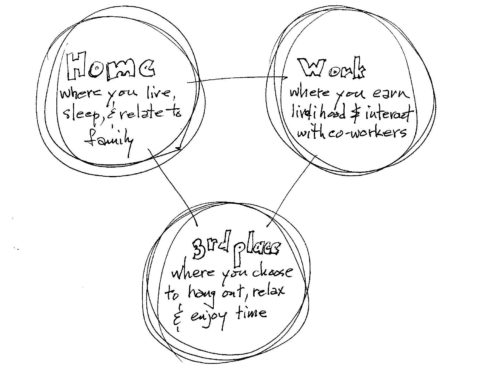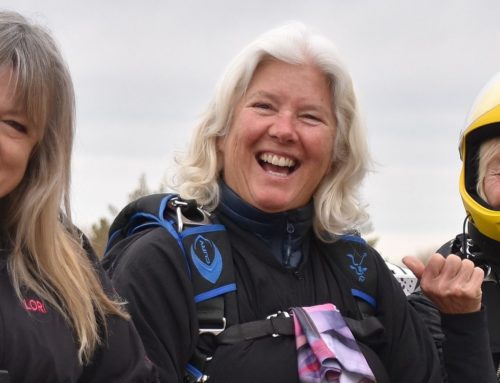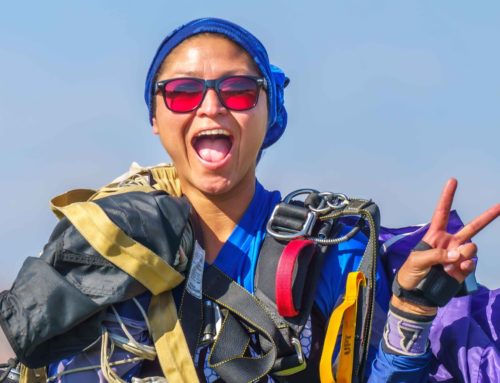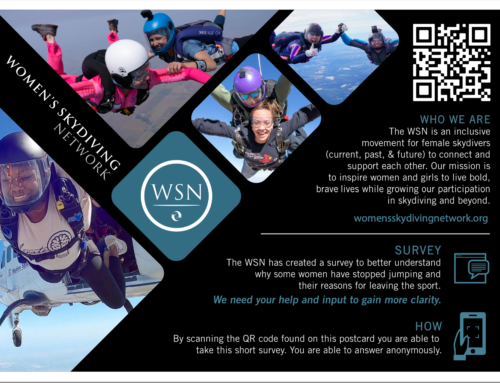How to Be a She at a New DZ
*Most of these tips pertain to anybody
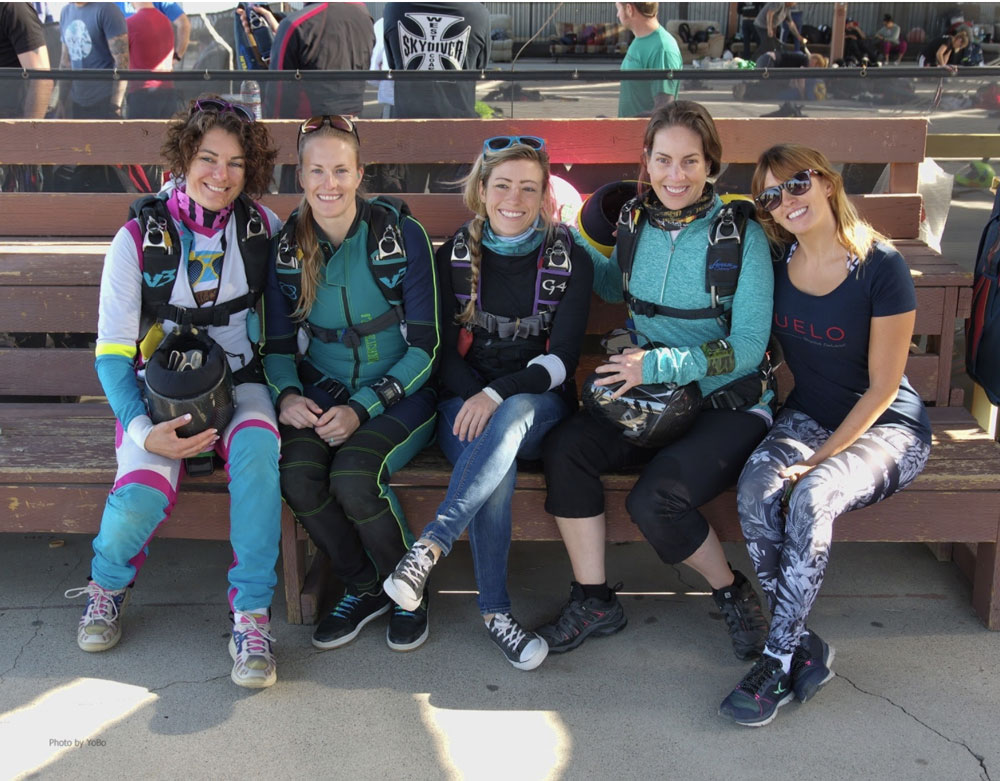
Photo By: Dean Chisholm
Visiting a new dropzone for the first time can be a bit nerve-wracking, especially as a “woman-one-way looking to build.” We’re here to offer a quick-start guide to the beautiful world of DZ hopping in the United States. (Things are a bit different in every country, so we’re just focusing on the good ol’ US of A here, but stay tuned for a future iteration with international & traveling-with-gear pointers.) Fair warning — paperwork is involved, there’s no shortcutting or circumnavigating dropzone waivers…yet.
Before we can get to the fun (or post-corona-social-anxiety-inducing) phase of finding funjumpers to funjump with, you’ve got to get your ducks in a row, babybird.
Before You Go
1 – Find out if you have a sufficient rating for the dropzone you’re looking to jump. Some DZs, such as beach-adjacent Go Jump Oceanside, have minimum license requirements of B or higher. It will be a big bummer to drive to the DZ just to find out you can’t jump.
2 – For the same reason, make sure you’re current. I.e. that someone else has signed off that you’ve jumped recently enough to be within the currency window for your license. These are:
A-license – 60 days
B-license – 90 days
C&D-licenses – 6 months
See the SIM or USPA.org for more information.
3 – Check the winds and weather for the day.
4 – Check your gear. Check your gear, then check your gear. There’s no worse time to handle an issue with your rig, helmet, or altimeter than 5 minutes before your first load of the weekend…well, maybe in the plane on that load, but you would never let it get to that point, would you? Special note, from years of failure to do so: make sure your reserve is in date and your alti’s battery is ready to take on the day with you, too.
5 – You may wish to throw a post up on the WSN Private Members-Only Facebook page to find WSN members at that DZ who can point you in the right direction, or make plans to jump together.
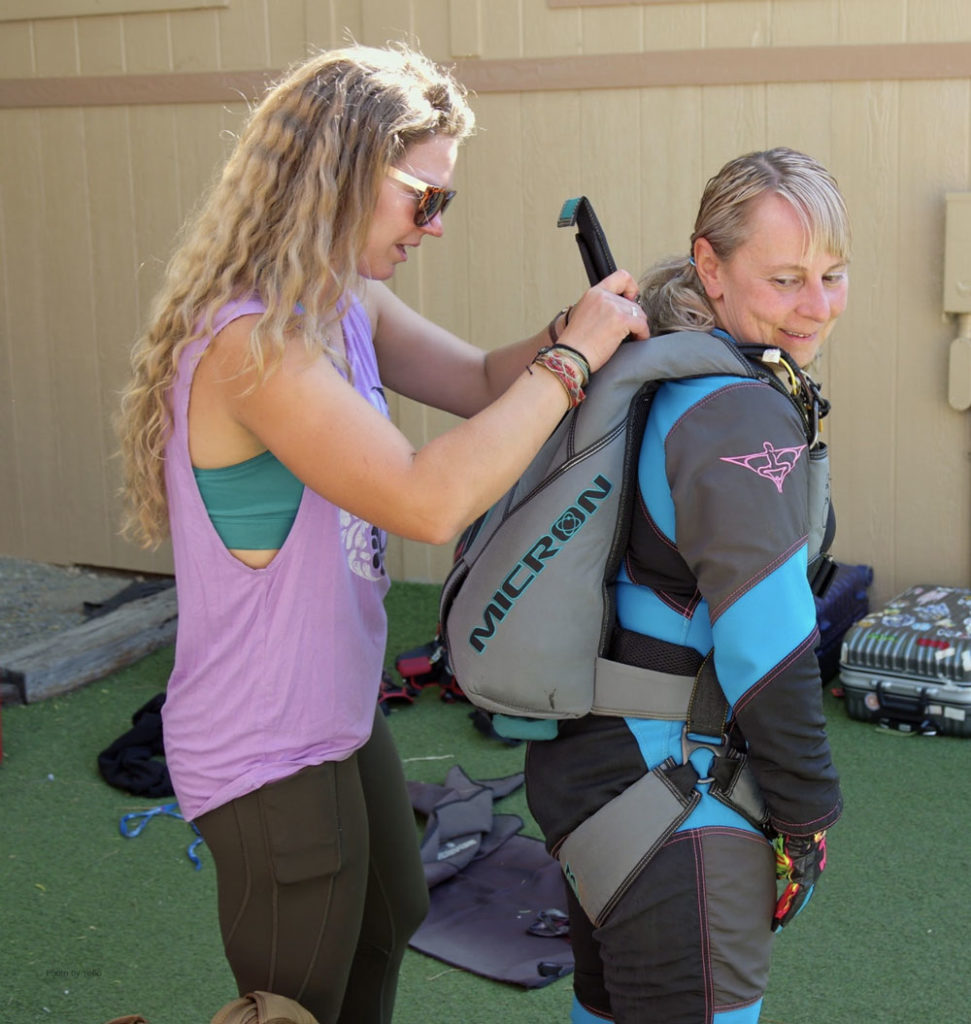
Photo By: Dean Chisholm
Arrival
You’ve made it to the DZ, finally! Now grab your rig and hoof it to the check-in desk. Typically there are signs. If in doubt, follow the birthday party crews and third-date tandem students until you reach the right people.
Every USPA DZ will ask you for a few things:
1 – Current USPA membership card. Luckily this is now available online 24/7 with your login. Just make sure you’re up-to-date on annual dues before you check-in.
2 – Logbook. Most dropzones require you to present a logbook showing you’re current for your license. If you’re on the edge of becoming uncurrent, you’re better off jumping your home DZ first. Do your best to show up to a new dropzone as current as possible.
3 – Reserve repack card & rig. You’ll need to dig out that tiny piece of origami that says your reserve was repacked by a rigger within the last 180 days, along with the seal on your reserve pin to match.
4. Waiver. Don’t worry…they’ll make sure you don’t forget to sign on the dotted line.
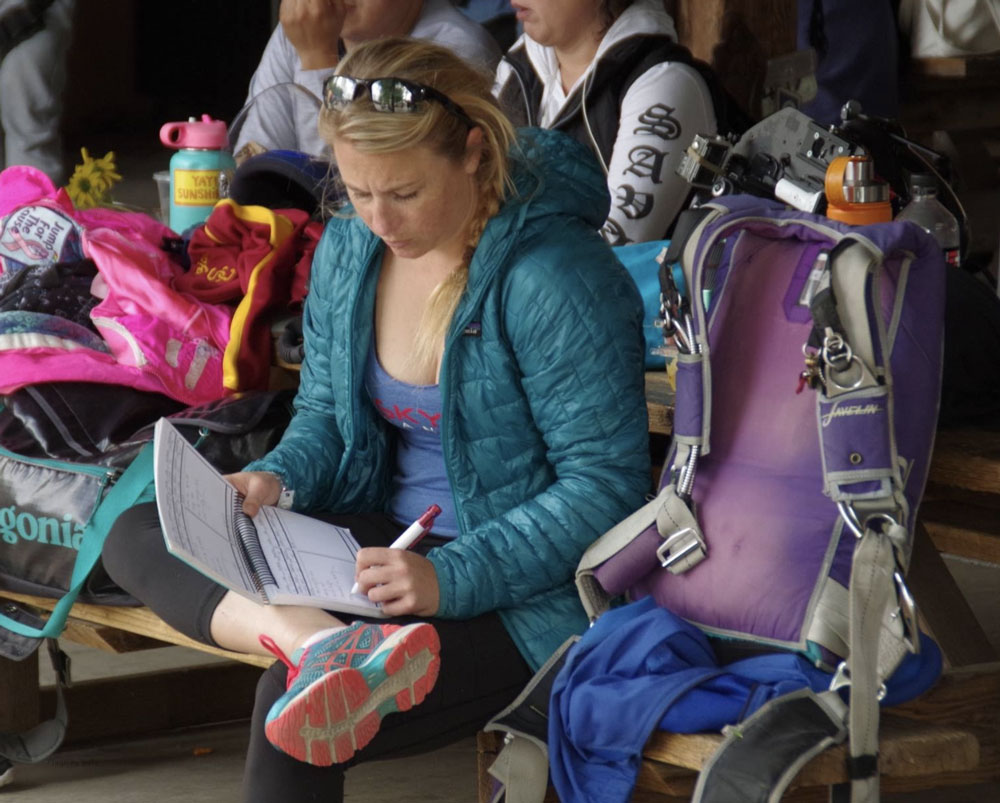
Photo By: Dean Chisholm
Go Time
Okay, you’re in, you’re legal, no one thinks you’re a tandem student. (Just kidding, unless you preplanned your visit with a WSN friend, everyone except three people in manifest, and perhaps actual tandem students still assumes that. That’s okay, though, because you’re here to have fun, not to impress anyone.)
What’s next? Unless the person checking you in is a rockstar that sends you where you need to be and briefs you, your next step will depend on a few factors. There are some solid options available if you are left to your own devices, though. Choose your own adventure, but be sure to do a thorough gear-check and get a DZ brief before you get on a load. From most to least conservative, your options are as follows:
Option 1 – Head straight for the school or ask the person at check-in to point you in the direction of the Safety & Training Advisor (S&TA). They’ll give you a lay of the land, rules to know, places to avoid, and they might even be able to send you towards the right pod of jumpers on the mat for your skill level and discipline. Wherever you are and whoever you talk to, make sure your safety briefing includes learning the run-in, where to land, key visual reference points for the DZ/landing area, and what your outs are, including when you’ll need to reroute by if you need to use one. Whether or not you’re jumping with your phone, get contact details for the DZ (of an on-site number who will actually answer). You can always stick a post-it note with a phone number in your repack card pocket if you have no real pockets.
Get key reference points for the DZ, i.e. how to find the landing area for the first time.
Option 2 – Manifest. Depending on how busy it is and your own personal preferences, it may be a good idea to get on a long call (45min+) at this point. Best case, you get a briefing and walk the landing area, watch a load come down, find new friends, and end up on a sick 3 way a mere hour after hopping out of your car. Worst case, you get those safety boxes checked, then go for a solo as a warm-up to get acquainted with the new digs — a very good idea.
Option 3 – (Only for smaller and slower DZs)- Go into the wild. Know your cues – find the first pile of Cookie helmets, OGIO bags, or bootie suits you see, a packer to befriend/hire, or a rogue guy or gal sitting rig-adjacent, and introduce yourself. It can be a bit stressful at first, but the good news is that it’s typically hard not to make friends on your first day on a dropzone. The smaller, more regulars-only Cheer’s Bar vibes it is, the more likely you are to stick out like a shiny new car. The bigger it is, the more groups of jumpers will be scattered around, and hopefully, that will mean better odds of finding people in your skill range interested in the same jumps as you. If you go this route, be sure to still get a rundown of the DZ dos & don’ts from the most experienced person you can find, preferably the S&TA.
No ‘mo Solos
If you went in search of a group to jump with off the bat, you’re already locked in for a day of fun, but if not, it’s time to start considering whether you want to get off the solo train. Choo! Choo!
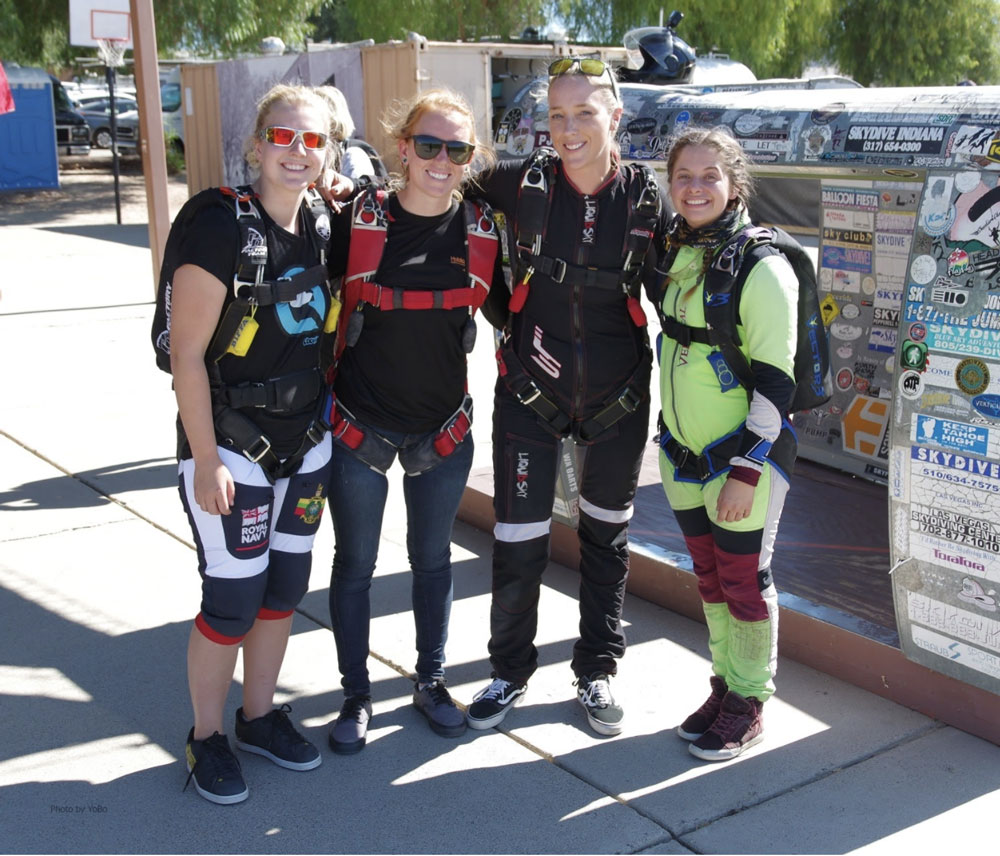
Photo By: Dean Chisholm
Jumping with new friends is fun, and it can be done safely if you stay vigilant and stick to your boundaries. Always approach a new-to-you jumper as a variable. If you can recall back to your AFF days, we always aim to limit the new variables incorporated into any jump plan. That means you should start small. I.e. a 10-way-zoo-dive should not be your first jump at a new dropzone. Has it happened and everyone lived to tell the tale? Of course! Is it a wise choice? Absolutely not. Go slow, don’t overestimate or exaggerate your competencies, and aim for safety first. The fun will follow. No one has fun on a jump when they are scared, surprised, and thinking “I see 1,2,3, plus me, I thought this was a 7-way?”
Finally, if you’re going to a new DZ as a solo jumper, be prepared to not find the perfect partner every or any day. It’s wonderful to find someone with a compatible fall rate, similar interests, safety consciousness, and desire to jump with you all day, but that’s rare. If you’re willing to get on a belly jump this time, even though you’re typically launching head-down 4-ways, or go for a flat track at sunset instead of the steepest angle you can muster, you’ll have safer, more successful skydives and lots of fun.
The good news is that you only need to do all of this once for each new DZ, with a few exceptions, if you keep jumping a mix of dropzones consistently. Bonus: you’ll quickly have friends all over! More friends and more familiar dropzones in your jumping repertoire mean more opportunities to jump on weird-weather days at one location, or when tandems fill up the plane all day at your home-DZ.
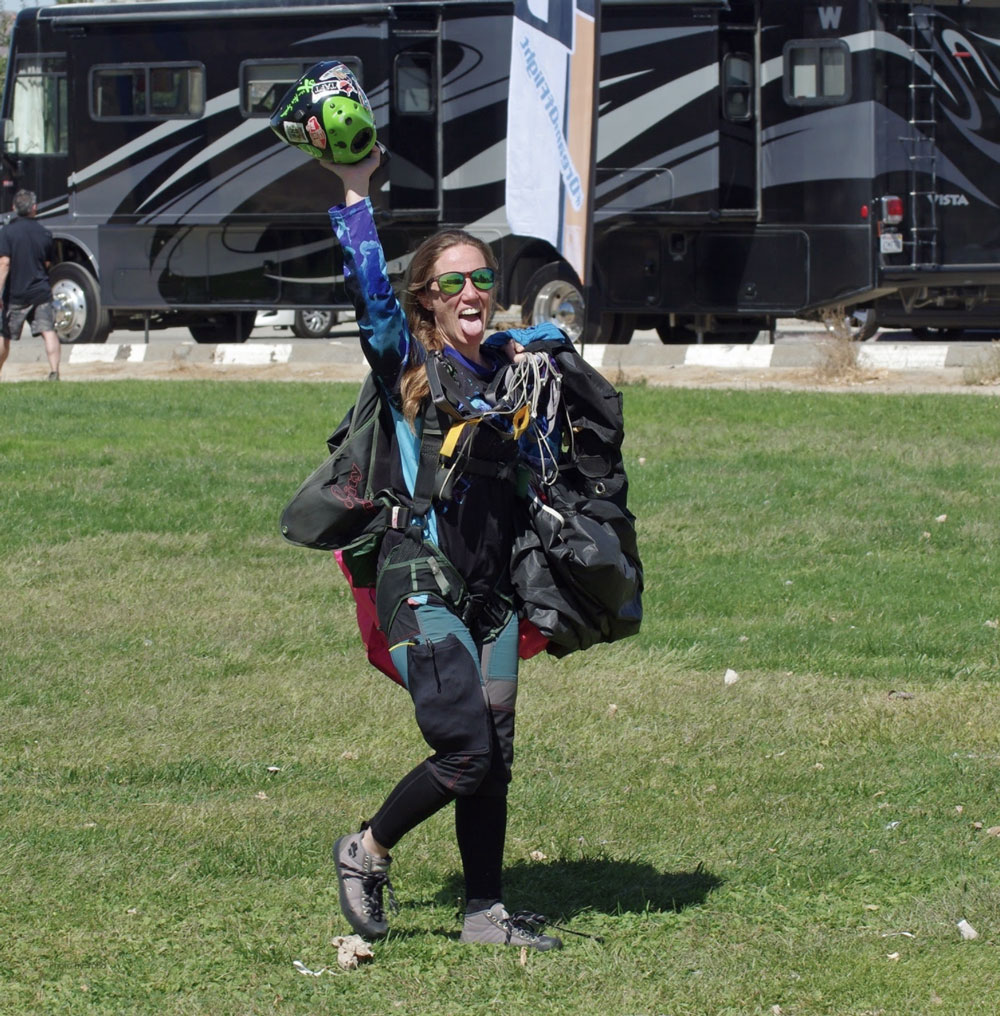
Photo By: Dean Chisholm
Consider this your unofficial and non-comprehensive guide to dropzone mobility. With a little flexibility and a whole lot of awareness, you can easily become a confident DZ-hopper in no time, and feel comfortable checking out other people’s sky homes from Florida to Oregon and beyond.
No matter what of these paths you end up on, keep having fun, staying safe and it’s all good.
See you at the DZ!
WSN Team

